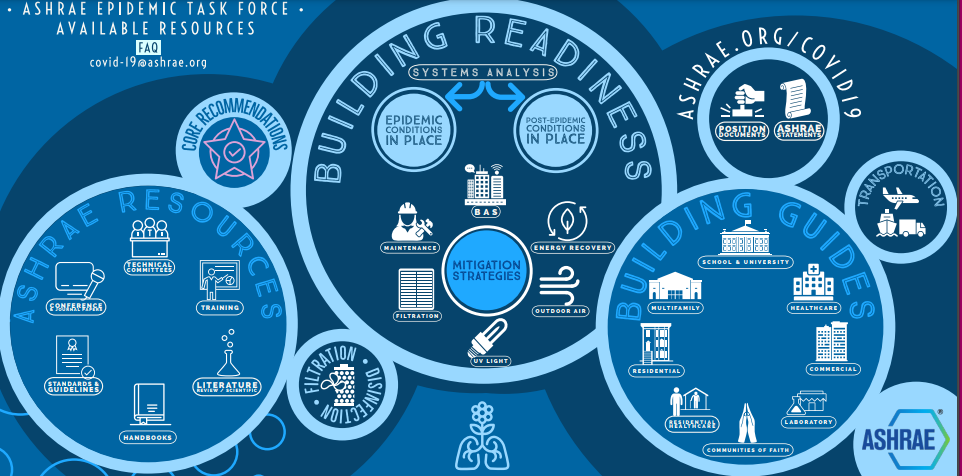ASHRAE Epidemic Task Force updates SARS-CoV-2 airborne transmission guidance

The ASHRAE Epidemic Task Force released an updated, unequivocal statement on the airborne transmission of SARS-CoV-2 in buildings.
ASHRAE has released the following statement:
“Airborne transmission of SARS-CoV-2 is significant and should be controlled. Changes to building operations, including the operation of heating, ventilating, and air-conditioning systems, can reduce airborne exposures.”
It replaces the April 2020 statement that said airborne transmission was “sufficiently likely” that airborne precautions should be taken. At that time both, the World Health Organization (WHO) and the Centers for Diseases Control (CDC), contended that transmission of SARS-CoV2 was by droplet and fomite modes, not airborne. Subsequently, both have acknowledged the risk of airborne transmission indoors.
“This may seem like a small step, but we feel it is important to leave no doubt about our position, given the muted support for ventilation and filtration as important tools in the effort to stop the pandemic, from some organizations that should be leading more strongly,” said William P. Bahnfleth, Ph.D., P.E., ASHRAE Epidemic Task Force chair.
The ASHRAE Epidemic Task Force has been developing and disseminating guidance for the control of airborne transmission of SARS-CoV-2 since its formation in March 2020.
“ASHRAE volunteers have played a huge role in evaluating evidence and developing detailed guidance to improve indoor environmental quality,” said Bahnfleth. “The public, globally, is benefitting from the volunteer efforts of some of the most knowledgeable scientists and engineers in our field and this updated guidance is proof of it.”
To view the complete airborne transmission statement and other COVID-19 resources, visit ashrae.org/COVID-19. Questions specific to Epidemic Task Force guidance can be emailed to covid-19@ashrae.org.
